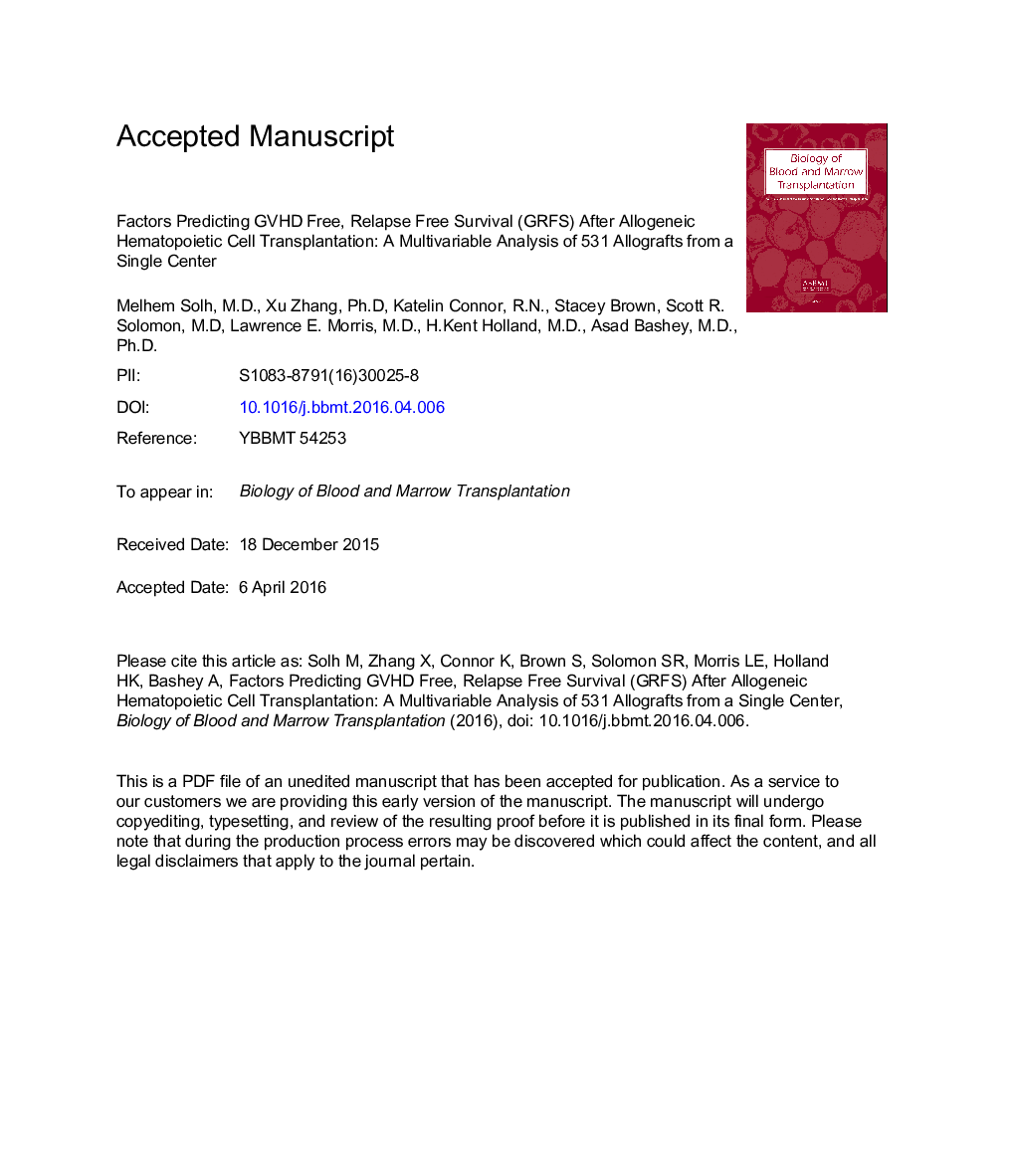| کد مقاله | کد نشریه | سال انتشار | مقاله انگلیسی | نسخه تمام متن |
|---|---|---|---|---|
| 8430837 | 1546251 | 2016 | 28 صفحه PDF | دانلود رایگان |
عنوان انگلیسی مقاله ISI
Factors Predicting Graft-versus-Host Disease-Free, Relapse-Free Survival after Allogeneic Hematopoietic Cell Transplantation: Multivariable Analysis from a Single Center
ترجمه فارسی عنوان
فاکتورهای پیشگیری از بروز بیماری بدون عارضه بدون تسریع در برابر پیوند سلولی هماتوپوئیدی آلوگنیک: تحلیل چند متغیره از یک مرکز واحد
دانلود مقاله + سفارش ترجمه
دانلود مقاله ISI انگلیسی
رایگان برای ایرانیان
موضوعات مرتبط
علوم زیستی و بیوفناوری
بیوشیمی، ژنتیک و زیست شناسی مولکولی
تحقیقات سرطان
چکیده انگلیسی
The ideal outcome of allogeneic hematopoietic cell transplantation (allo-HCT) is based on survival that is free of morbidity. The most common causes of treatment failure and morbidity after HCT are relapse, graft-versus-host disease (GVHD), and nonrelapse death. A composite endpoint that measures survival free of clinically significant negative events may be a useful way to determine the success of allo-HCT. We assessed GVHD and relapse-free survival (GRFS) where the events were acute GVHD grades III to IV, chronic GVHD requiring immunosuppression, relapse, or death in 531 consecutive adult patients who received an allo-HCT between 2006 and 2014 at our center. Median follow-up of living patients was 46 months (range, 12 to 123). HLA matched related donor (MRD, n = 198, 37%), matched unrelated donor (MUD, n = 205, 39%), and haploidentical donor with post-transplant cyclophosphamide (HID, n = 128, 24%) were used. Thirty-six percent of patients had a high/very-high Dana Farber disease risk index (DRI). Estimated rates of GRFS at 1 and 2 years after MRD, MUD, and HID transplantations were 34% and 26%, 26% and 17%, and 33% and 31%, respectively, with MRD recipients having a better GRFS than MUD (P < .05). On multivariable analysis, peripheral blood stem cell source (HR, 1.34; P = .04), MUD (HR, 1.41; P = .003), and high/very high DRI (HR, 1.66; P = .001) were all associated with a worse GFRS post-HCT. These data suggest that GRFS can be predicted by patient disease risk, stem cell source, and donor type. Importantly, MUDs produce inferior GRFS to MRDs, whereas HIDs do not.
ناشر
Database: Elsevier - ScienceDirect (ساینس دایرکت)
Journal: Biology of Blood and Marrow Transplantation - Volume 22, Issue 8, August 2016, Pages 1403-1409
Journal: Biology of Blood and Marrow Transplantation - Volume 22, Issue 8, August 2016, Pages 1403-1409
نویسندگان
Melhem Solh, Xu Zhang, Katelin Connor, Stacey Brown, Scott R. Solomon, Lawrence E. Morris, H. Kent Holland, Asad Bashey,
